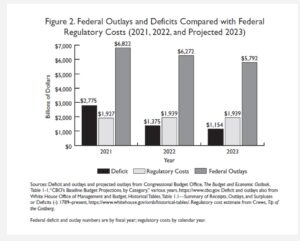Last week, the Supreme Court discarded a longstanding doctrine that granted regulatory agencies, such as the Centers for Medicare & Medicaid Services, extensive leeway to establish regulations for the organizations under their jurisdiction. The decision (majority opinion) in the case of Loper Bright Enterprises v. Raimondo is available here: SCOTUS Chevron Ruling
The decision overturns a longstanding doctrine that granted regulatory agencies, such as the Centers for Medicare & Medicaid Services, wide latitude in rulemaking for the organizations they oversee. One such rule heavily scrutinized by long-term care providers is the nursing home staffing mandate, presently engaged in litigation by multiple parties including the American Association for Health Care (trade association). Seemingly, the balance of power in this action has now shifted to the plaintiffs (trade groups, industry providers).
The decision will impact the entirety of the regulated community, encompassing Medicare, Medicaid, and other healthcare laws. Should issues such as the staffing mandate be overturned, I anticipate that provider groups will seriously consider efforts to reverse previous decisions made in the Chevron framework particularly those related to Medicare reimbursement methods. One that I know is a constant bone of contention among various parties is the nursing home Medicaid bed tax. This tax was created via administrative authority.
Big Regulatory Growth Post Original Chevron Decision
Advocates for regulatory reform, me included, frequently highlight the cost and growth of regulations. The Federal Register, which is the daily repository for rules and regulations, concluded 2023 with 90,402 pages, marking it as the second-highest record ever. This figure represents the gross page count; eventually, the National Archives will deduct a few skips and blank pages before posting the final official count, although this will not substantially alter the overall picture.
President Biden marked a significant increase from the 79,856 pages in the Federal Register noted in 2022. Although the volume of rules and regulations did not break records, he has dismissed the prioritization of regulatory streamlining, labeling the previous administration’s efforts as “harmful.” Instead, he has directed agencies to seek “net benefits” through comprehensive “whole-of-government” initiatives focused on climate, equity, and various economic and social policies.
Below is a graph illustration the explosion of regulations since the 1940s. Chevron was initially decided in 1984 and since, the largest growth has occurred in recent years. For example, the largest increase in Federal Register pages occurred during the Obama administration, principally as a result of the Affordable Care Act. In terms of Health Care Reform regulation, since 1994, there are 3,118 related regulatory actions. The Federal Register reference is here: Federal Register :: Suggested Search – Health Care Reform


Cost of Regulation
At the core of the Loper Bright case is an argument not only about regulatory overreach but of cost. Loper contended that the government imputed a regulatory oversight requirement such that federal inspectors must be on fishing boats, at the cost of the boat owner. From the decision, the court ruled against the National Marine Fisheries Service (NMFS) regulation requiring fishing companies to cover the costs of federal monitors assigned to their boats, as authorized by the Magnuson–Stevens Fishery Conservation and Management Act. The fishing company contended that the Act did not permit NMFS to transfer the cost of monitors to the companies, disputing the Chevron deference upheld in NMFS’s favor in prior lower court proceedings.
The federal government seldom reviews federal regulations to guarantee that each one is more beneficial than detrimental annually, and it does not evaluate the total regulatory burden at all. The most recent comprehensive annual assessment of the regulatory enterprise’s cost, mandated by law, was conducted in 2002.
While it may not be accurate to claim that Washington is unable to count, it appears that Washington chooses not to. There are a few regulations that are counted, but many remain uncounted, incalculable, omitted, or ignored, all pending revelation. For example, even when Washington does count such as with the nursing staffing mandate for nursing homes, its numbers rarely jive with actual expert analysis. The final rule, per CMS, is expected to cost facilities $43 billion over the next decade which is half compared to analysis done by its own consultant, Abt and Associates. https://rhislop3.com/2023/08/30/wednesday-feature-cms-snf-staffing-mandate-stalled-the-abt-report-on-feasibility/
The estimated costs of federal regulation for 2023 is $1.939 trillion. Of this amount, DHS and Health regulation factor in at $260 billion.

In 2022 and 2023, regulatory costs were greater than the federal deficit. Concerning to me is that with a burgeoning deficit, now $35 trillion, and the fastest growing cost element in the U.S. budget being interest on the debt, a significant opportunity to reduce ongoing deficits is regulatory reform. Let’s hope the reversal of Chevron puts on that path.

1 thought on “SCOTUS Chevron Decision a Win for Healthcare”